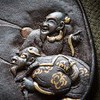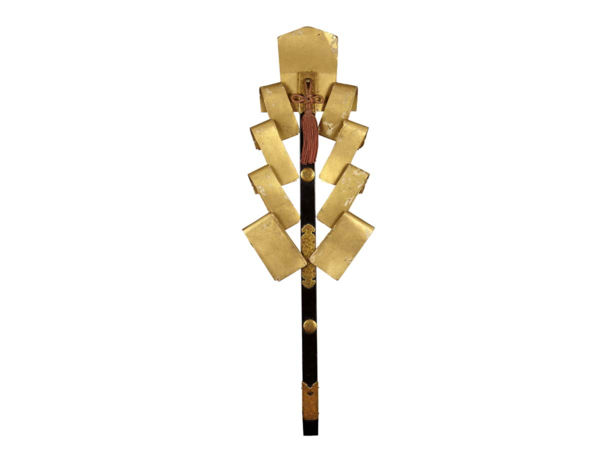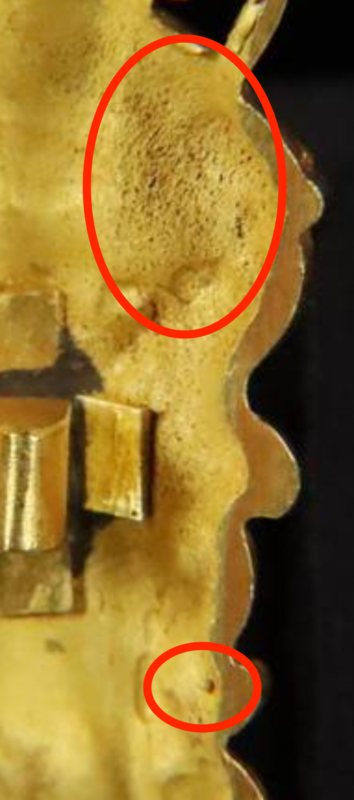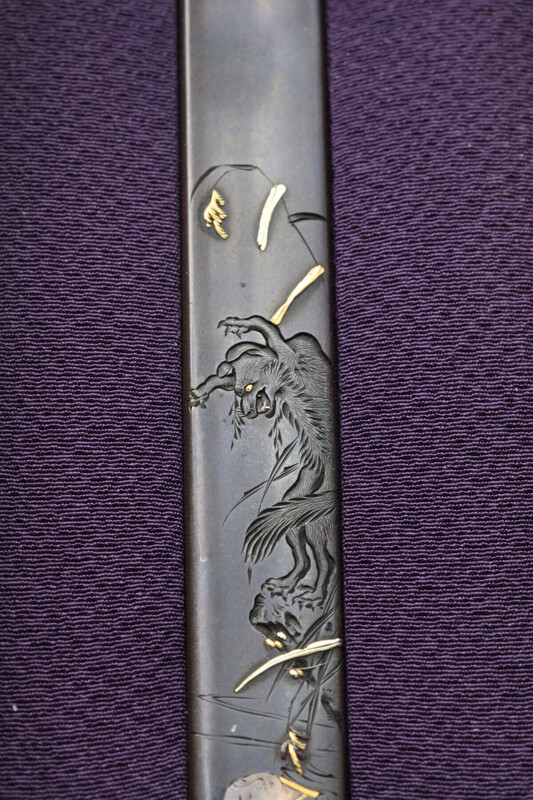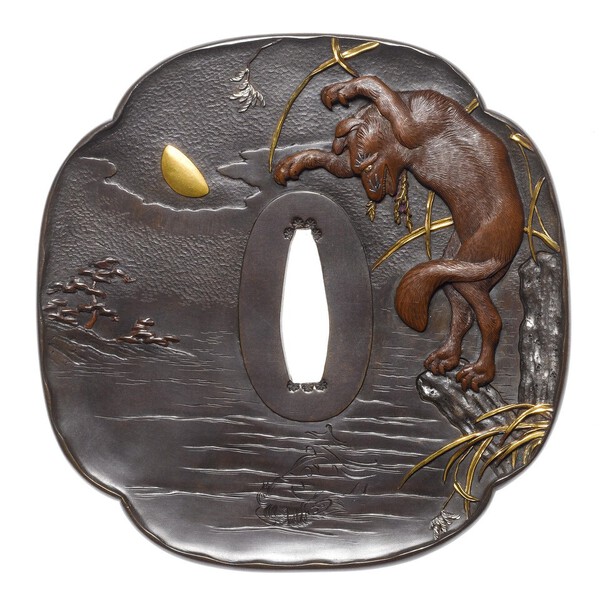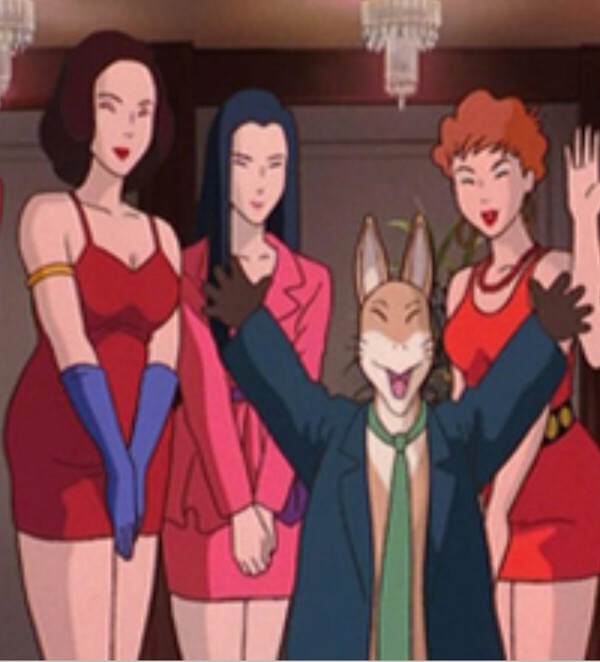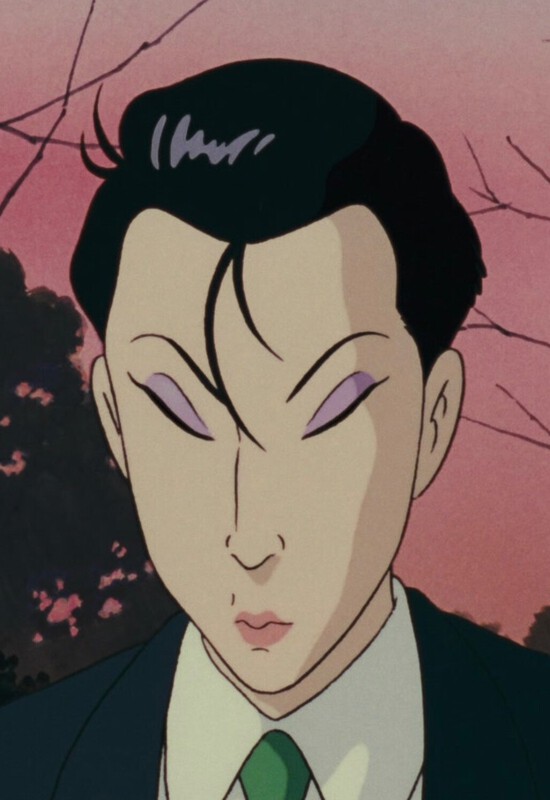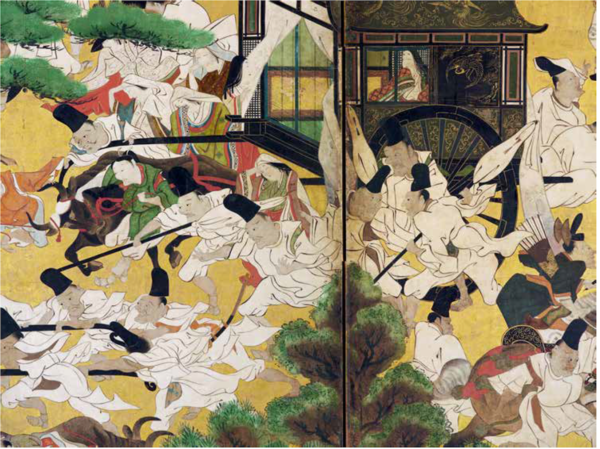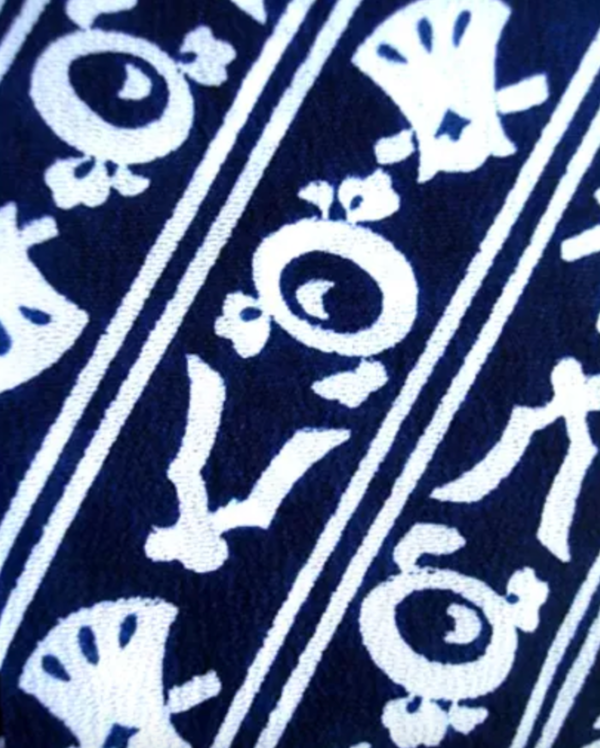-
Posts
858 -
Joined
-
Last visited
-
Days Won
7
Tanto54 last won the day on May 20 2021
Tanto54 had the most liked content!
Profile Information
-
Location:
US
Profile Fields
-
Name
George M
Recent Profile Visitors
The recent visitors block is disabled and is not being shown to other users.
Tanto54's Achievements
-
Instead of being a romantic Samurai death theme like Nozarashi - this is actually the bones of a woman... The famous beauty and Poet Sotoba Komachi (aka Ono no Komachi). The theme is about faded beauty. The sotoba or grave post is the clue that the maker is giving to identify the theme.
-
Hi Stefano, Looks like a nice saya. The mon is upside down. Its a Gohei Mon (crossed scepters used by Shinto Priests) - a variant of the one shown here.
-
-
Hi Dale, do some research on kenukigata-tachi (tweezer handled tachi). They have this same "slot" in their tsuka for a very practical reason (hint: resonance). I think that the weapon that you posted is a combination jutte and helmet breaker and it would have no problem causing a concussion or denting/poking a hole through 99% of Samurai helmets big enough to reach and damage the skull (without breaking the weapon). Remember that helmets are actually very thin metal...
-
Doesn't this have some small "positive" bubbles of gold (on the front and back) that indicate recent, modern, investing casting methods, and isn't that porosity on the back which is another indicator of casting rather than uchidashi?
-
Wow Bob - that’s a GOAT kozuka (one of the Greatest Of All Times!). It is a magnificent masterpiece of sculpture on a small scale and, in my opinion, on the same level as the best works of the top sculptors in history. The leaves carved into the body of the kozuka above the fox’s head and her feet are spellbinding. Only a true master could cut those that way without leaving the “hesitation” marks that we see on most katakiri and kebori carving. Every part is just perfect - once again, it amazes me how the artist can convey so much power in such a small space. So many different carving techniques on a single item and each masterfully done! Your kozuka makes it clear why Haruaki Hogen was considered one of the three great modern masters along with Goto Ichijo and Kano Natsuo. I’ve posted a better photo of the tsuba that Dale posted above from the Kano Natsuo School, and it’s fairly clear to me that yours is far better. As you know, Fox (Kitsune) are seen as shapeshifters in both China and Japan. Some are considered benevolent, but many are malevolent - causing everything from minor mischief to great destruction and even death. The good Foxes are usually related to Inari - God of the Rice Harvest (e.g., the Fox who helped Munechika forge his famous sword), and there are also tales of Foxes who rewarded people for doing good (in some cases becoming their Wives and even bearing them Children). In other cases, the Fox masquerading as a woman merely represents a cunning, seductive and evil nature. Much like the Witch Trials of the Western World, until fairly recently, in China and Japan they actually killed women accused of being shapeshifting Foxes. Tosogu will often depict a Fox with certain clues like a paint brush in the Fox’s mouth, a drum, flaming jewel, etc. to indicate a particular story. Your kozuka probably depicts the story of Tamamo no Mae. She was the most famous and reviled of the Fox shapeshifters having enchanted and destroyed the kings of three different countries before coming to Japan and seducing the Emperor causing him to be deathly ill. She was eventually exposed and chased into the Nasu Marshes where she was killed. The wonderfully evil stance and expression of your Fox, as well at the marshy setting makes me believe that Haruaki Hogen was probably thinking about her when making your kozuka. Finally, the Japanese have a word for the kind of human face we see reflected in the water on your kozuka (which they found to be very attractive): “kitsune-gao” (fox-face) and means people with close eyes, high cheekbones and and thin eyebrows. I’ve included some photos of Foxes in human form from the Anime Pom Poko which illustrate this kind of face. Bob, thank you so much for sharing your wonderful collection with us over the past few years! It has certainly been the highlight of the tosogu section. I hope that your collection continues to grow and that you will continue to share it with us whenever possible.
-
Hey Dale, the second tsuba that you posted has all the clues... It will be fun detective work for you - look carefully at the cart, aoi leaves, umbrella and pine needle with one broken needle and research what those symbolize. Here's a hint.
-
Item 314 - the Ichiryu Mitsuyoshi Carp Tsuba - what a great tsuba for your first! The ebay aspect adds so much to the treasure hunt beginning of your collecting experiences. So many of us bought fake replicas swords or tourist tsuba as our first acquisition and thought that they were treasures (until we learned better). In your case, you got a very nice tsuba that was a commission piece for someone close and highly regarded. Not only is it a beautiful tsuba with excellent workmanship, it has also been mounted and carried on a sword. The artist is Ichiryu Mitsuyoshi (early 1800’s Haynes 05566 & 05562). The commission is for a Uruno-kun. “Kun” is an honorific like “San” that you use at the end of someone’s name; however, “Kun” is more informal and is common among friends (usually by the senior to the junior). Therefore, we can see that Mitsuyoshi probably made this for a good friend. Haynes says that Mitsuyoshi is from Mito in Hitachi and interestingly, the name “Uruno” is a name that derived from the Mito area of Japan. When signing the tsuba on the back side, Mitsuyoshi has had some fun! Notice the “-“ mark above the kogai hitsu-ana. It is the kanji “Ichi” - the first part of his School/Family name of “Ichiryu". In the “in-mei” (gold seal under his mei on the back side), Mitsuyoshi has written two characters that mean willow tree and are pronounced "ryu” like the second part of his School/Family name “Ichi-ryu”) and the character “Yo” (meaning “presented”). So if you take the (1) “Ichi” above the kogai hitsu-ana, (2) the “Ryu” and “Yo” in the in-mei gold seal, (3) his mei, and (4) the dedication to Uruno-Kun on the front, THEN it means: Ichiryu Mitsuyoshi presented this to his good friend Uruno-kun.
-
Marco just distributed his Newsletter/Catalogue this morning. It is really outstanding - some of the best tosogu photos that I've ever seen and very interesting analysis. Just what we needed in the tosogu community. Great job Marco!
-
With regard to the person depicted on Tsuba No. 313, I received a very nice response from the Homma Museum, but unfortunately they did not have anything that would show what Homma Mitsumichi (4th Generation) looked like. They kindly checked for other family members likenesses from around this time period and confirmed that it did not look like Homma Mitsuoka (3rd Generation). I will keep trying to find a likeness of Homma Mitsumichi (4th Generation) and will let you know if I find anything. In the interim, I’ve been looking at other things that might help us identify the person (and confirm whether it is Homma Mitsumichi or not). Often, we can use the mon on a kimono on tosogu to help us identify the person or at least their clan. However, in the case of this tsuba, I do not believe that the patterns on his kimono are mon. I believe that they are stylized Kiku (Chrysanthemum) like those used in Yokikotokiku kimono design (a combination of an Axe, Koto and Kiku - which is word play for something like “hearing good news”). This was a very popular design in the Edo Period (see photos). Therefore, we probably cannot use that to help identify the gentleman. The style of Ikebana being employed on the tsuba is distinctive so if we can identify the Ikebana School, we may be able to use that to help confirm the person’s identity (i.e., did the Homma family practice that style of Ikebana?). Are there any Ikebana experts here on NMB who can identify which Ikebana School arranged flowers in this style?
-
Dear Marco, that looks awesome! What a great project - much needed by our tosogu community! I just signed up and can't wait to see more of your excellent work (I especially love your photography). Good luck!
-
Now that is some great research Dale!
-
I agree with Ford that this tsuba is probably a portrait of an actual person. From a Western perspective, it’s natural to think it could be a self-portrait of the artist, but that’s not very common on tosogu. In addition, the tsuba was made in 1843 and Ikkin’s dates are 1812 - 1863, so he would have been around 31 years old at the time the tsuba was made. The man on the tsuba is approximately 55-70 years old, so it can't be Ikkin. As you may know, Ikkin was one of Goto Ichijo’s best students and studied with him from 1828 - 1838 when he received the kanji “ichi” (the first part of Ikkin) from Goto Ichijo. At that time, Ikkin went to work for the Sakai Daimyo at Tsurugaoka in Dewa’s Shonai province (Sakata Town). He commuted back and forth between Edo (Tokyo) and Sakata. Ikkin was famous for drinking too much, and it is even said that Goto Ichijo tried to intervene to get him to quit drinking and wasting his talents. Ikkin II’s (Ikkin’s son’s) work and mei is just like his father’s and and it is said that much of the known Ikkin work is actually by the Son. However, in the case of this tsuba, it is dated before the Son started using the Ikkin name around 1864. While much of Ikkin’s work was for the Sakai Daimyo and family he did do work for others. The gentleman portrayed on your tsuba is probably a Businessman instead of a Bushi; therefore, it would not be the retired Sakai Daimyo Sakai Tadakata (who would have been about the right age in 1843 when the tsuba was made). The eyeglasses (rare at the time), pursuit of Ikebana, hat and the fur collar shows that he is a rich and cultured businessman (probably semi-retired). The richest and most influential business family in that town was probably the Homma family who regularly hosted the Sakai Daimyo and even the Emperor when he was in the area. The Homma family was famous for its artistic connections including the arts of Ikebana (their ancestral home has even been converted into a present day art museum). Homma Mitsumichi (4th Generation) would be about the right age for the gentleman on your tsuba in 1843, and I believe that there is a good chance that he is the person depicted on your tsuba. I have written to the Homma Museum to see if they have a photo of Mitsumichi or can confirm the identity of the person depicted on your tsuba. I’ll let you know what they say in a later post.
- 957 replies
-
- 10
-

-







